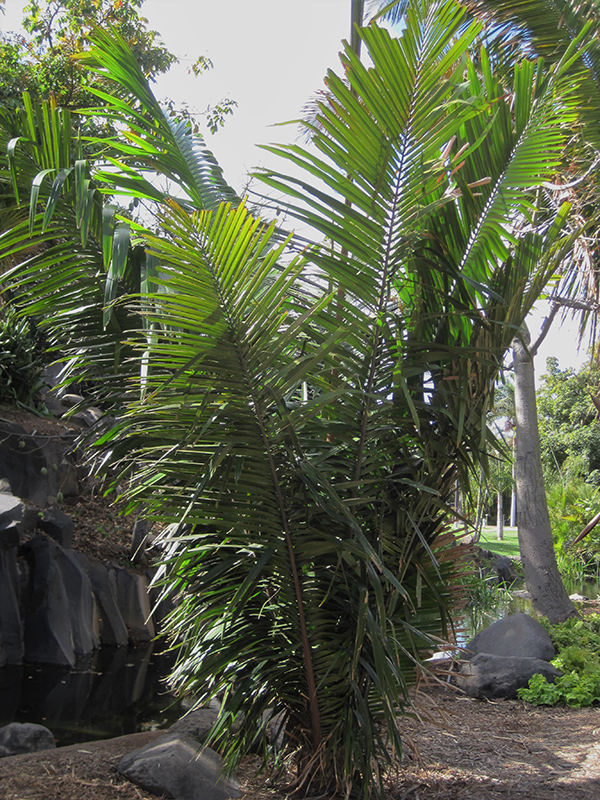Height: 80 feet
Spread: 40 feet
Sunlight:
![]()
Hardiness Zone: 10b
Other Names: Colenda Oil Palm
Description:
An absolutely stunning palm that is rare in cultivation; distinguished because it self-cleans by shedding dead leaves; use as a large landscape accent or avenue tree in frost free climates
Ornamental Features
Chivila Palm has attractive dark green evergreen foliage on a tree with the bulk of the canopy held atop a towering trunk or stem. The large glossy narrow pinnately compound leaves are highly ornamental and remain dark green throughout the winter. The rough gray bark is extremely showy and adds significant winter interest.
Landscape Attributes
Chivila Palm is an open evergreen tropical plant with a strong central leader and a towering form, with a high canopy of foliage concentrated at the top of the plant. Its average texture blends into the landscape, but can be balanced by one or two finer or coarser trees or shrubs for an effective composition.
This is a relatively low maintenance tropical plant, and usually looks its best without pruning, although it will tolerate pruning. It has no significant negative characteristics.
Chivila Palm is recommended for the following landscape applications;
- Accent
- Shade
- Hedges/Screening
Planting & Growing
Chivila Palm will grow to be about 80 feet tall at maturity, with a spread of 40 feet. It has a high canopy of foliage that sits well above the ground, and should not be planted underneath power lines. As it matures, the lower branches of this tree can be strategically removed to create a high enough canopy to support unobstructed human traffic underneath. It grows at a medium rate, and under ideal conditions can be expected to live to a ripe old age of 150 years or more; think of this as a heritage tropical plant for future generations!
This tropical plant should only be grown in full sunlight. It does best in average to evenly moist conditions, but will not tolerate standing water. It is not particular as to soil type or pH. It is somewhat tolerant of urban pollution. This species is not originally from North America..

